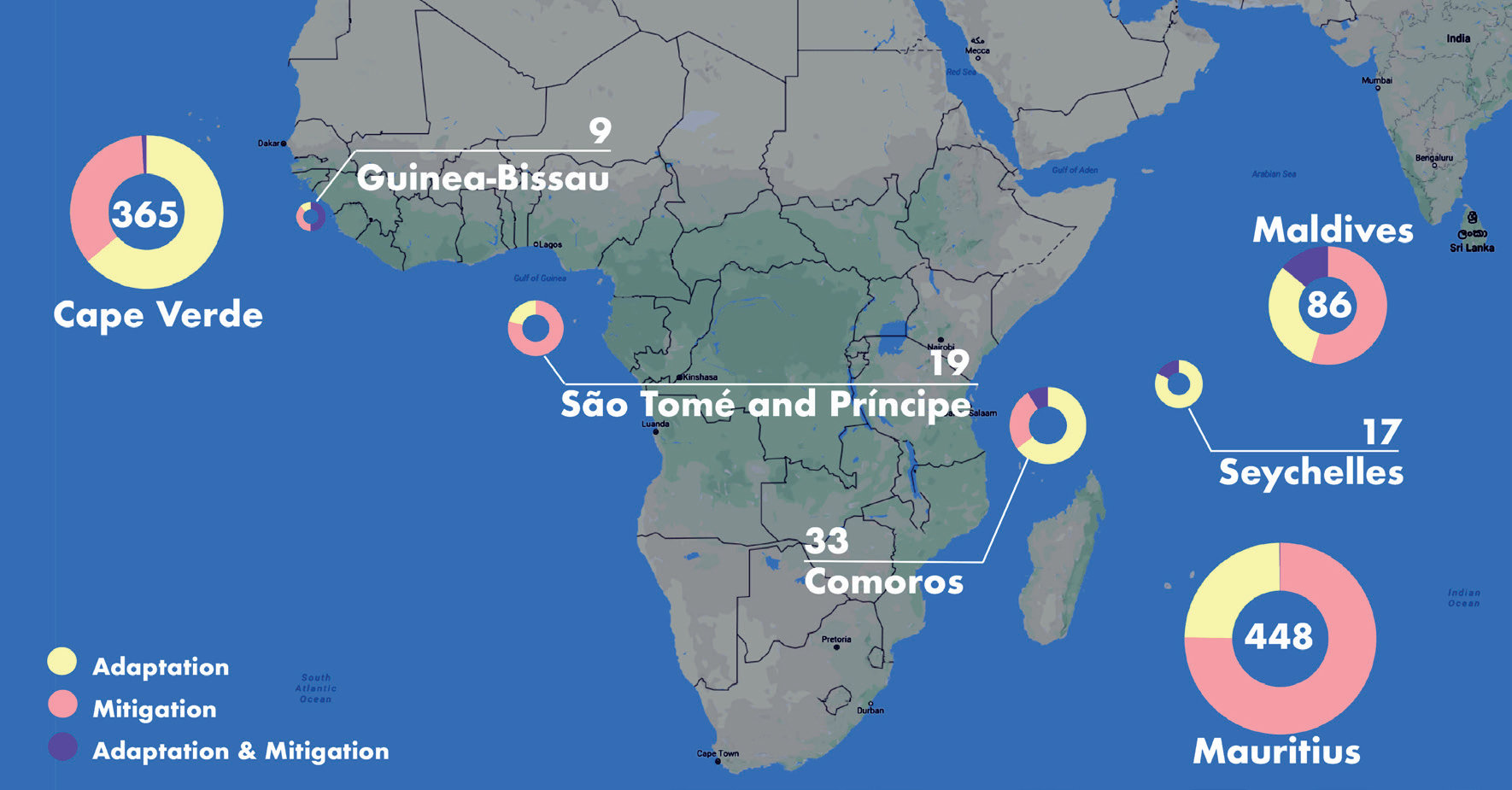This report analyses concessional international public flows of climate finance to Indian Ocean and African Small Island Developing States for the six years 2010–2015.
Parties to the United Nations Framework Convention on Climate Change (UNFCCC) have agreed to mobilize an initial US$ 100 billion annually from 2020 to help developing countries respond to climate change.
The authors examine the sources of climate finance, its distribution among recipient countries, the shares targeting adaptation and mitigation, the spread across sectors, the modes of delivery and intermediaries involved in programming the funds, as well as the share of committed funds that has been disbursed so far.
Summary of climate finance in the Indian Ocean and African SIDS 2010–2015 (amounts committed US$ million)
For each country analysed – Cape Verde, the Comoros, Guinea-Bissau, the Maldives, Mauritius, São Tomé and Principe, and the Seychelles – detailed snapshots of climate finance are provided.
The authors point out that the narrow range of sectors represented in climate-finance data raises questions about how difficult it is for recipient countries to align available climate funding with a broad array of other development imperatives. Such issues need to be highlighted and considered further since they may limit the ability of SIDS to implement national adaptation strategies or to make effective use of limited international public finance.
The analysis also shows that disbursement of committed funds 2010–2015 varied from country to country, and across the entire region amounted to just 39% of total commitments (US$ 384 million). This suggests there are challenges related to how climate finance is programmed and delivered, which need to be better understood.
Design and development by Soapbox.
